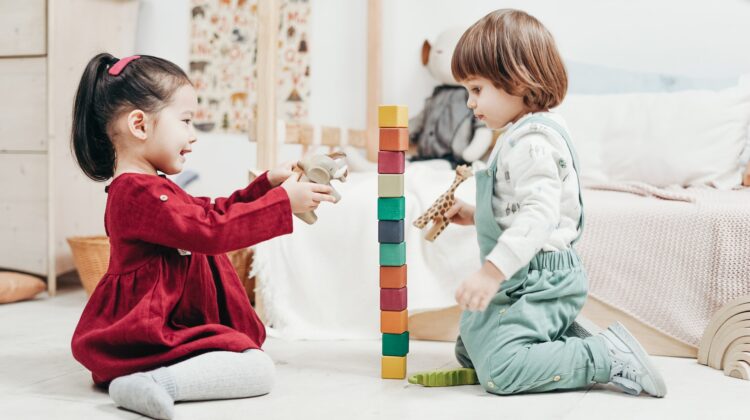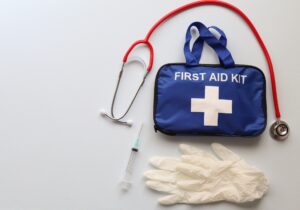
As parents, we all want to keep our children safe. One of the most important things we can do is to childproof our homes. A childproof home will help keep your little ones safe from harm and give you peace of mind. In this guide, we’ll go through everything you need to know to childproof your home.
Understanding the Dangers in Your Home
Before you start childproofing your home, it’s important to understand the potential dangers that can be found in your home. Children are curious and love to explore, so it’s essential to identify potential hazards
that could cause harm. Here are some common dangers to watch out for:
Poisonous Substances
Cleaning products, medications, and other toxic substances should be kept out of reach of children. Even small amounts of some substances can be harmful, so it’s important to be vigilant.
Electrical Hazards
Electrical outlets are often at a child’s eye level, making them easy to reach. Covering them with outlet covers or tamper-resistant receptacles can prevent children from sticking their fingers or objects into the
outlets.
Sharp Objects
Sharp objects like knives, scissors, and tools should be kept out of reach of children. Make sure they are stored securely.
Choking Hazards
Small objects like toys, coins, and batteries can be choking hazards for young children. Keep these items out of reach.
Where to Start – A Room-by-Room Guide to Childproofing
Now that you know the potential dangers in your home, it’s time to start childproofing. The best way to approach this is to tackle one room at a time. Here’s a room-by-room guide to childproofing:
Kitchen
A kitchen is a place where many potential hazards can be found. Here are some things you can do to childproof your kitchen:
● Install cabinet and drawer locks to keep children from accessing sharp objects and toxic substances.
● Move cleaning products and toxic substances to high shelves or cabinets that are out of reach.
● Use stove knob covers to prevent children from turning on the stove.
● Install oven locks to keep children from opening the oven door.
● Use corner and edge bumpers to protect children from sharp corners.
Living Room
The living room is a place where children spend a lot of time. Here are some things you can do to childproof your living room:
● Cover electrical outlets with outlet covers or tamper-resistant receptacles.
● Use cord shorteners to keep cords out of reach.
● Use furniture anchors to secure heavy furniture to the wall and prevent tipping.
● Place door knob covers to prevent children from opening doors.
Bathroom
The bathroom is another room where many potential hazards can be found. Here are some things you can do to childproof your bathroom:
● Install cabinet and drawer locks to keep children from accessing medications and other toxic substances.
● Use a toilet lock to prevent children from playing in the toilet.
● Move razors, scissors, and other sharp objects out of reach.
● Use non-slip mats in the bathtub and shower to prevent slips and falls.
Bedroom
The bedroom is where your child will spend a lot of time sleeping and playing. Here are some things you can do to childproof your child’s bedroom:
● Use window guards to prevent falls from windows.
● Use cord shorteners to keep cords out of reach.
● Use furniture anchors to secure heavy furniture to the wall and prevent tipping.
● Insert door knob covers to prevent children from opening doors.
Childproofing Essentials – Gates, Locks, and Covers
In addition to room-by-room childproofing, there are some essential tools you’ll need to keep your child safe. Here are some of the most important childproofing essentials:
Baby Gates
Baby gates are essential to keeping your child safe from falls down stairs and other hazards. There are many types of baby gates available, including pressure-mounted gates, hardware-mounted gates, and retractable gates. Make sure to choose a gate that is appropriate for the area you want to block off.
Cabinet and Drawer Locks
Cabinet and drawer locks are essential to keeping your child safe from sharp objects, toxic substances, and choking hazards. There are many types of locks available, including magnetic locks, adhesive locks,
and spring-loaded locks. Make sure to choose locks that are appropriate for the type of cabinet or drawer you want to secure.
Outlet Covers
Outlet covers are essential to keeping your child safe from electrical hazards. There are many types of covers available, including plastic covers, sliding covers, and tamper-resistant receptacles. Make sure to
choose covers that are appropriate for the type of outlet you want to cover.
Internet Safety
In addition to physical dangers, there are also digital dangers that parents need to be aware of. Here are some tips for keeping your child safe online:
Have Good Internet
Internet safety is a top priority for parents once their children get old enough to browse the web, so you’ll want to make sure that the provider of your internet offers great service but also safety.
Set Up Parental Controls
Most devices and services offer parental controls that can be used to restrict access to inappropriate content. Make sure to set up parental controls on all devices that your child uses.
Monitor Your Child’s Online Activity
Keep an eye on your child’s online activity and make sure they are only accessing appropriate content. Talk to them about the dangers of sharing personal information online.
Teach Your Child About Online Safety
Teach your child about the importance of online safety and how to stay safe online. Make sure they know not to share personal information and to report any suspicious activity to you.
Keeping Your Child Safe Outdoors – Tips for the Yard and Driveway

In addition to childproofing your home, it’s also important to keep your child safe outdoors. Here are some tips for keeping your child safe in the yard and driveway:
Install Fencing
Install fencing around your yard to prevent your child from wandering off or accessing hazardous areas. Make sure the fence is at least 4 feet tall and has a self-closing gate.
Use Driveway Safety Measures
Use driveway safety measures like driveway alarms and mirrors to prevent accidents. Make sure to supervise your child when they are playing near the driveway.
Supervise Your Child
Always supervise your child when they are playing outside. Make sure they are wearing appropriate clothing and protective gear.
Choosing Safe Furniture and Decor
When choosing furniture and decor for your home, it’s important to consider safety. Here are some things to look for when choosing safe furniture and decor:
Choose Low-VOC Paints and Finishes
Choose low-VOC paints and finishes for your furniture and decor. VOCs (volatile organic compounds) can be harmful to your child’s health.
Look for Flame-Retardant Materials
Look for furniture and decor that is made from flame-retardant materials. This will help prevent fires andk eep your child safe.
Check for Sharp Edges and Corners
Check for sharp edges and corners on furniture and decor. Use corner and edge bumpers to protect your child from sharp corners.
The Importance of Supervision and Education
While childproofing your home is essential to keeping your child safe, it’s also important to supervise your child and educate them about potential dangers. Here are some tips for supervising your child:
Always Keep an Eye on Your Child
Always keep an eye on your child, especially when they are playing in hazardous areas like the kitchen or bathroom.
Teach Your Child About Potential Dangers
Teach your child about potential dangers in the home and how to stay safe. Make sure they know not to touch hot stoves or play with electrical cords.
Set Rules and Boundaries
Set rules and boundaries for your child and make sure they understand the consequences of not following
them.
Emergency Preparedness – What to Do in Case of an Accident

Despite our best efforts, accidents can still happen. It’s important to be prepared for emergencies and know what to do in case of an accident. Here are some tips for emergency preparedness:
Keep a First Aid Kit Handy
Keep a first aid kit handy and know how to use it. Make sure to restock it regularly.
Post Emergency Numbers
Post emergency numbers like 911 and the Poison Control Center in a visible location.
Take CPR and First Aid Classes
Take CPR and first aid classes so you know how to respond in case of an emergency.
Common Childproofing Mistakes to Avoid
While childproofing your home is essential, there are some common mistakes that parents make. Here are some mistakes to avoid:
Not Installing Gates at the Top and Bottom of Stairs
Many parents only install a gate at the top of the stairs and forget to install one at the bottom. Make sure to install gates at the top and bottom of stairs to prevent falls.
Not Securing Heavy Furniture to the Wall
Heavy furniture like dressers and bookcases can tip over and cause serious injury. Make sure to secure heavy furniture to the wall with furniture anchors.
Not Supervising Your Child
Even with a childproof home, it’s important to supervise your child at all times. Make sure to keep an eye on them and keep hazardous areas off-limits.
Conclusion
Childproofing your home is an essential step in keeping your child safe. By understanding potential hazards, childproofing room by room, and using essential tools like gates, locks, and covers, you can create a safe and secure environment for your little ones. Remember to supervise your child, educate
them about potential dangers, and be prepared for emergencies. With these tips, you can childproof your home like a pro and give your child a safe and happy childhood.